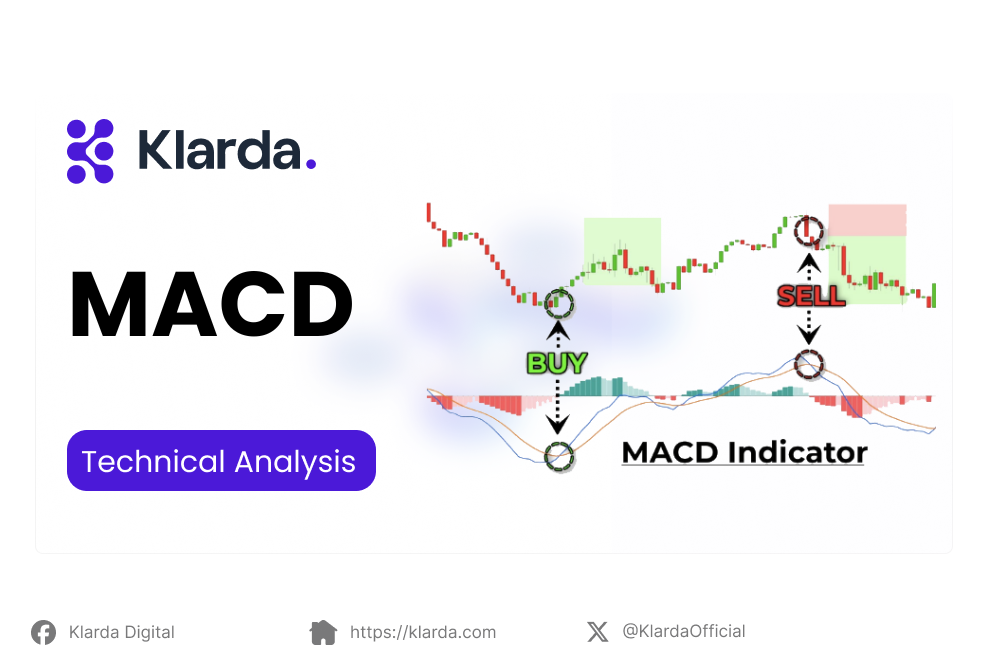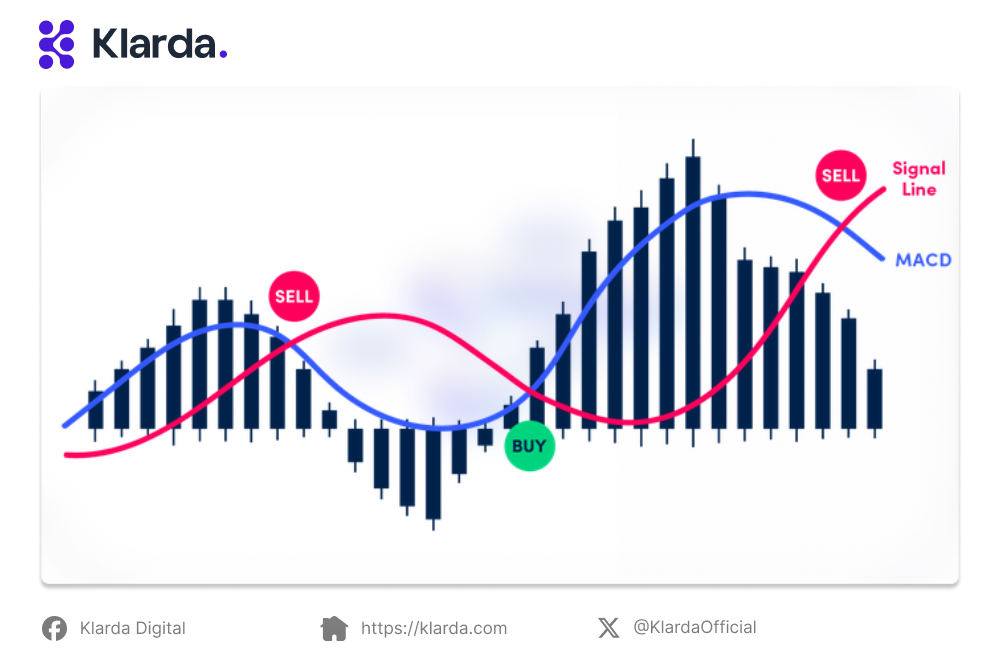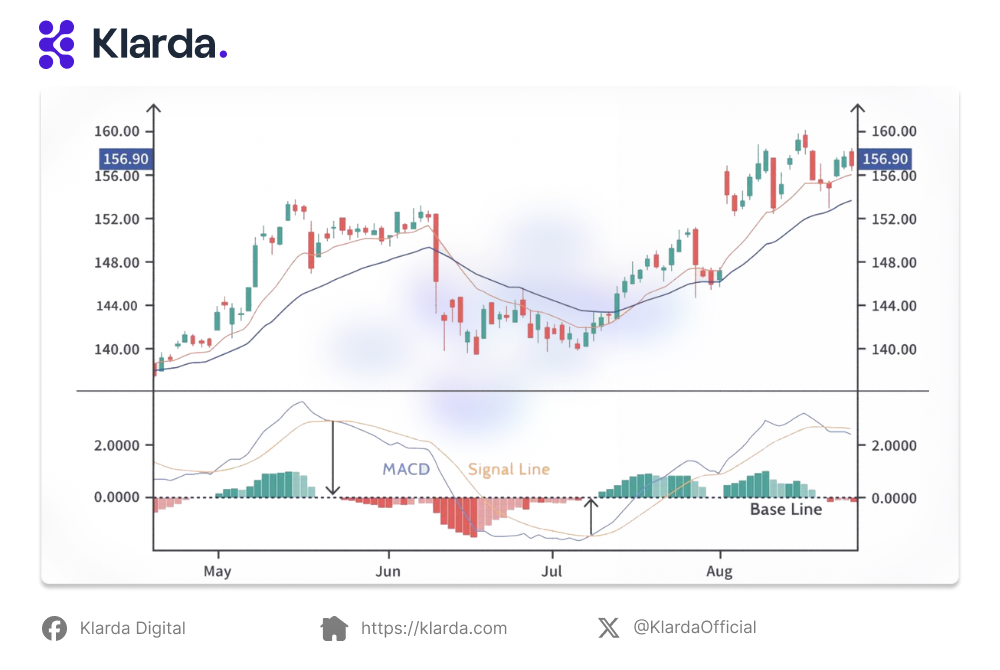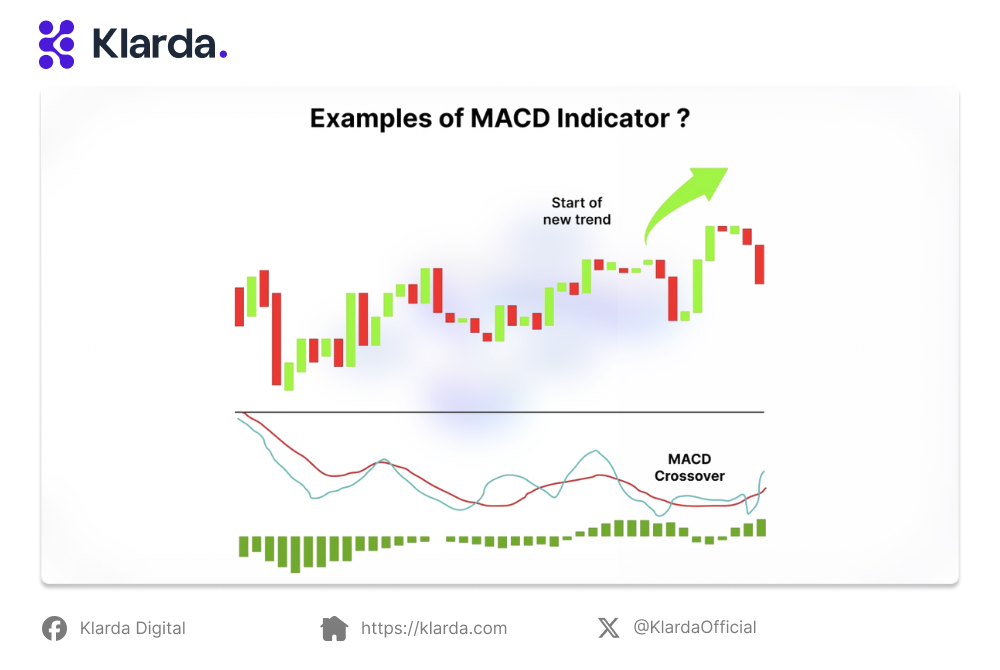MACD
The MACD indicator stands as a powerful tool in the arsenal of technical analysts and traders.
Developed by Gerald Appel in the late 1970s, the MACD indicator is a versatile and widely utilized technical analysis tool that provides valuable signals for potential market movements. The Moving Average Convergence/Divergence (MACD or MAC-D) is a momentum indicator that follows trends, revealing the connection between two exponential moving averages (EMAs) of a security's price. The calculation of the MACD line involves subtracting the 26-period EMA from the 12-period EMA.

KEY TAKEAWAYS
- The MACD indicator has become a staple in technical analysis, finding applications in various financial markets, including stocks, Forex, and cryptocurrencies.
- Its dual-line structure, featuring the MACD line and Signal Line, provides a comprehensive view of market momentum.
- Traders often use MACD indicator divergence to identify potential reversals.
- Traders utilize MACD to recognize shifts in the direction or strength of a stock's price trend.
- MACD inherently lags behind the current price
WHAT IS MACD INDICATOR?
Gerald Appel introduced the MACD indicator in the late 1970s as a tool to help traders identify shifts in market momentum.
Over the decades, MACD indicator explained as a staple in technical analysis, finding applications in various financial markets, including stocks, Forex, and cryptocurrencies. Its enduring popularity is a testament to its reliability and adaptability in different market conditions.
The Moving Average Convergence Divergence (MACD) is a technical analysis indicator used to identify trends, momentum, and potential reversal points in the price movements of financial assets. Calculated by subtracting the 26-period Exponential Moving Average (EMA) from the 12-period EMA, the MACD is a versatile tool that assists traders in gauging the strength and direction of a trend.
The key features of the MACD lie in its simplicity and effectiveness. The indicator's primary components include the MACD line, which represents the difference between the short-term and long-term EMAs, and the Signal Line, a smoothed average of the MACD line. The resulting histogram visually illustrates the difference between these two lines. The MACD is known for generating buy and sell signals through crossovers and providing insights into potential trend reversals through divergence analysis.

MACD indicator is a tool to help traders identify shifts in market momentum
MACD INDICATOR VS. RELATIVE STRENGTH
Similarities:
While both the MACD indicator and the Relative Strength Indicator (RSI) are popular tools in technical analysis, they share some commonalities. Both are momentum oscillators that help traders identify overbought or oversold conditions in an asset's price. Additionally, both indicators are used to generate buy or sell signals based on specific conditions.
Differences
Despite their similarities, the MACD and RSI differ in their underlying calculations and focus. The MACD primarily considers the relationship between two EMAs, emphasizing the convergence and divergence of moving averages. On the other hand, the RSI focuses on the relative strength of gains versus losses over a specified period, providing a measure of the speed and change of price movements.
The advantages of the MACD lie in its versatility and ability to capture both trend strength and potential reversals. Its dual-line structure, featuring the MACD line and Signal Line, provides a comprehensive view of market momentum. The RSI, while effective in identifying overbought or oversold conditions, may not capture trend reversal signals as effectively as the MACD.

The advantages of the MACD lie in its versatility and ability to capture both trend strength and potential reversals
EXAMPLE OF MACD INDICATOR
In practical terms, the MACD indicator finds application in various trading strategies. Here are some highlighted examples of its usage:
Trend Identification: One of the primary way of how to use MACD indicator is in identifying trends. When the MACD line crosses above the Signal Line, it generates a bullish signal, indicating potential upward momentum. Conversely, a crossover below the Signal Line suggests potential downward momentum.
Divergence Analysis: “how to use MACD indicator in day trading?” MACD divergence is used to identify potential reversals. If the price of an asset reaches a new high while the MACD fails to confirm, signaling a bearish divergence, it may indicate a weakening trend and a possible reversal.
Histogram Analysis: And how to read MACD indicator? The MACD histogram, representing the difference between the MACD line and the Signal Line, provides visual cues for investors about the strength of a trend. A rising histogram indicates increasing momentum, while a falling histogram may suggest a weakening trend.
Signal Confirmation: Traders often impulse MACD indicator signals in conjunction with other technical indicators to confirm trading decisions. For example, a bullish MACD crossover accompanied by increased trading volume may strengthen the validity of a buy signal.

MACD indicator finds application in various trading strategies
FAQ
How do traders employ the Moving Average Convergence/Divergence (MACD)?
Traders utilize MACD to recognize shifts in the direction or strength of a stock's price trend. Its fundamental purpose is to help traders identify moments when recent momentum in a stock's price could indicate an alteration in its underlying trend.
Is MACD considered a leading or lagging indicator?
MACD is classified as a lagging indicator. As it relies on past data, MACD inherently lags behind the current price. Nevertheless, some traders leverage MACD histograms to anticipate potential trend changes, considering this aspect of MACD as a leading indicator for predicting future shifts in trend.
Its historical roots, versatile features, and application across various financial markets underline its significance in decision-making. While comparisons with the RSI highlight differences in calculation and focus, the MACD's advantages in capturing both trends and reversals set it apart.
Investors should approach technical analysis tools, including the MACD indicator, with a commitment to continuous learning and careful investigation. Each indicator has its nuances, and understanding them thoroughly empowers traders to make informed decisions, navigate market trends, and ultimately enhance their success in the ever-evolving world of trading.
Updated 7 months ago